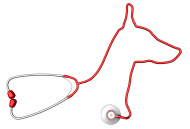
“My cat was a stray at 6 months old. We adopted her. She doesn’t want to use her litter box. She only wants to eliminate outside. HELP!” It is natural for a cat to want to use a soil-type substance for elimination. For indoor cats, their “soil” is cat litter and using it is a behavior kittens learn from their mother. It is unusual for a cat to actually have to be trained by humans to use a litter pan. However, for a cat that has only known the outdoors, their “soil” literally is soil, and they may not recognize commercial cat litter as an acceptable potty substrate. To help train your litter box challenged kitty, you should purchase multiple litter pans in a variety of sizes and configurations to determine what your cat prefers. Hooded boxes can be considered, but many cats prefer an open litter pan, especially yours who now uses the great outdoors as her potty. Cats that live outside often do not like the confinement of a litter pan and need a large toilet area to entice indoor elimination. In these cases, bigger is better. You can cut a door in the side of a large plastic storage tub or use an under bed sweater box to provide a roomy bathroom area. For an even bigger option to help really stubborn cats, try a child’s wading pool. In addition to offering options in litter pan size and shape, you need to provide a variety of types of litter for your kitty to try. There are a wide range of choices, including clay litter, clumping litter, silica, plastic pearls, recycled newspaper pellets, wood shavings, etc. There is even a litter called Cat Attract™ that contains a natural herb attractant to which some cats will respond. Litters also may be scented or unscented. Each cat will have her own preference, but studies have shown that most cats opt for an unscented, finer grain clumping-type litter when given a choice. You should also determine if you cat has any favorite potty spots in the yard. If so, scoop up some soil and material from those toilet areas and add it to the litter pans. This material can carry the scent of previous eliminations and may attract your cat to her indoor toilet more readily. Litter box placement is also important. Choose a site that is easy for your cat to access, but is also out of the way of traffic and commotion. Just like us, cats prefer to eliminate in locations that are quiet and have some privacy. Laundry rooms may seem like a convenient, out of the way location for a litter box, but the noises from the washer and dryer can be frightening. Avoid areas with only one way in or out, such as a corner, so that your cat does not feel “trapped” when going into the litter box area. You can also try placing litter pans in multiple locations throughout the home so your cat can choose the area most comfortable to her. Alternatively, you may need to confine your kitty to a single room with the various litter pans and litter boxes, even that children’s wading pool. As your cat starts to use certain boxes and litter substrates, you can begin to eliminate those that she does not like. If she will only use the wading pool, for instance, the next step is to very gradually introduce smaller and smaller potty boxes until one of reasonable size can be used. Once she is consistently using a certain kind of litter pan and litter type, you can give her increasing amounts of freedom around the house and place some of her litter boxes in various locations. Cats are fastidious animals, constantly grooming themselves to keep clean. So another important part of litter box training is making sure the litter pans are regularly maintained. Waste should be scooped on a daily basis and litter should typically be completely changed out weekly. The boxes should be cleaned with soapy water on a monthly basis. Detergents can be off-putting to some cats, so be sure to rinse thoroughly with plain water after washing. With patience and a step-by-step approach, most cats can be successfully trained to use a litter box. Remember that initially you need to go big and offer a variety of litter and box options to your kitty. She should eventually find an acceptable replacement for her outdoor “potty box”.






